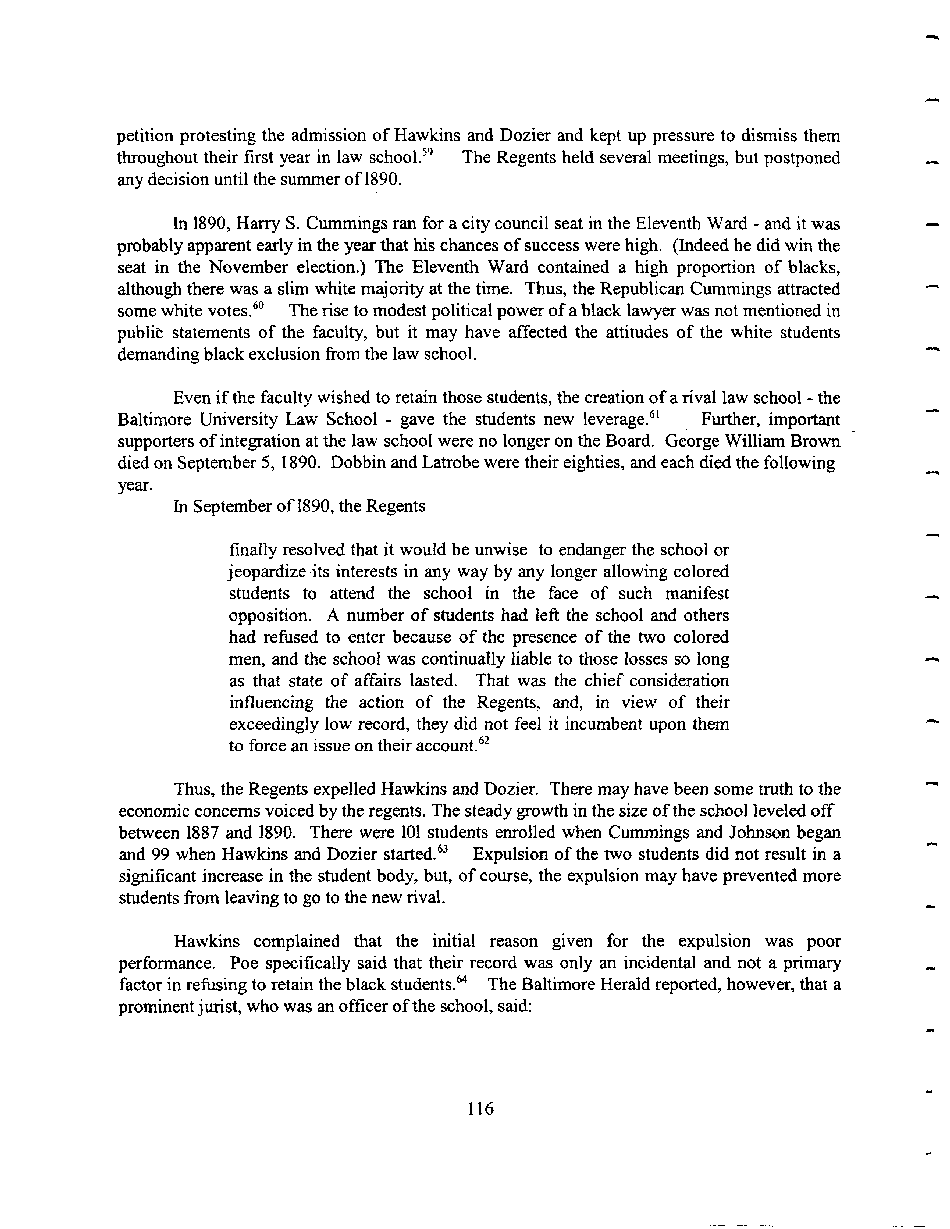|
petition protesting the admission of Hawkins and Dozier and kept up pressure to dismiss them
throughout their first year in law school.59 The Regents held several meetings, but postponed
any decision until the summer of 1890.
In 1890, Harry S. Cummings ran for a city council seat in the Eleventh Ward - and it was
probably apparent early in the year that his chances of success were high. (Indeed he did win the
seat in the November election.) The Eleventh Ward contained a high proportion of blacks,
although there was a slim white majority at the time. Thus, the Republican Cummings attracted
some white votes.60 The rise to modest political power of a black lawyer was not mentioned in
public statements of the faculty, but it may have affected the attitudes of the white students
demanding black exclusion from the law school.
Even if the faculty wished to retain those students, the creation of a rival law school - the
Baltimore University Law School - gave the students new leverage.61 Further, important
supporters of integration at the law school were no longer on the Board. George William Brown
died on September 5, 1890. Dobbin and Latrobe were their eighties, and each died the following
year.
In September of 1890, the Regents
finally resolved that it would be unwise to endanger the school or
jeopardize its interests in any way by any longer allowing colored
students to attend the school in the face of such manifest
opposition. A number of students had left the school and others
had refused to enter because of the presence of the two colored
men, and the school was continually liable to those losses so long
as that state of affairs lasted. That was the chief consideration
influencing the action of the Regents, and, in view of their
exceedingly low record, they did not feel it incumbent upon them
to force an issue on their account.62
Thus, the Regents expelled Hawkins and Dozier. There may have been some truth to the
economic concerns voiced by the regents. The steady growth in the size of the school leveled off
between 1887 and 1890. There were 101 students enrolled when Cummings and Johnson began
and 99 when Hawkins and Dozier started.63 Expulsion of the two students did not result in a
significant increase in the student body, but, of course, the expulsion may have prevented more
students from leaving to go to the new rival.
Hawkins complained that the initial reason given for the expulsion was poor
performance. Poe specifically said that their record was only an incidental and not a primary
factor in refusing to retain the black students.64 The Baltimore Herald reported, however, that a
prominent jurist, who was an officer of the school, said:
116
�
|

